Ancient stone commemorative arches are a daily reminder of community's pride in its academic prowess over generations, Wang Ru reports in Chaozhou, Guangdong.

Editor's note: An array of Chinese cities have maintained their cultural memories in the form of historical neighborhoods that have only added to their multilayered charm and vigor with the passage of time. China Daily is taking readers on a journey to some of these timeless areas, where President Xi Jinping has left his footsteps and remarked on the preservation and vitalization of heritage. In this installment, we walk through Chaozhou's Taiping Road historical area in Guangdong province and see how the commemorative arches lining the street act as repositories of city's emphasis on education.
The old buildings, intricate stone carvings and beautiful calligraphy found along Paifang Street in Chaozhou, Guangdong province, create an amazing corridor of art. Paifang refers to commemorative arches, and these structures, reminiscent of the legends of the Chaoshan region (which includes Chaozhou, Shantou and Jieyang), are silent witness to the fact that flesh may wither, but memory endures.
The street, which is also known as Taiping Road, has been one of Chaozhou's main thoroughfares for a very long time, and traces of the past, tangible and intangible, continue to thrive.
Covering the street and a small area of nearby alleys, the Taiping Road historical area is one of four blocks in the ancient layout, which is located in the western part of modern Chaozhou, a coastal city on the South China Sea.
READ MORE: Keepers of the century past
An alley links Paifang Street with the Guangji Gate Tower, an ancient city gate, and Guangji Bridge, an old pontoon bridge dating to the Southern Song Dynasty (1127-1279). All are landmarks of the city that tourists try not to miss.
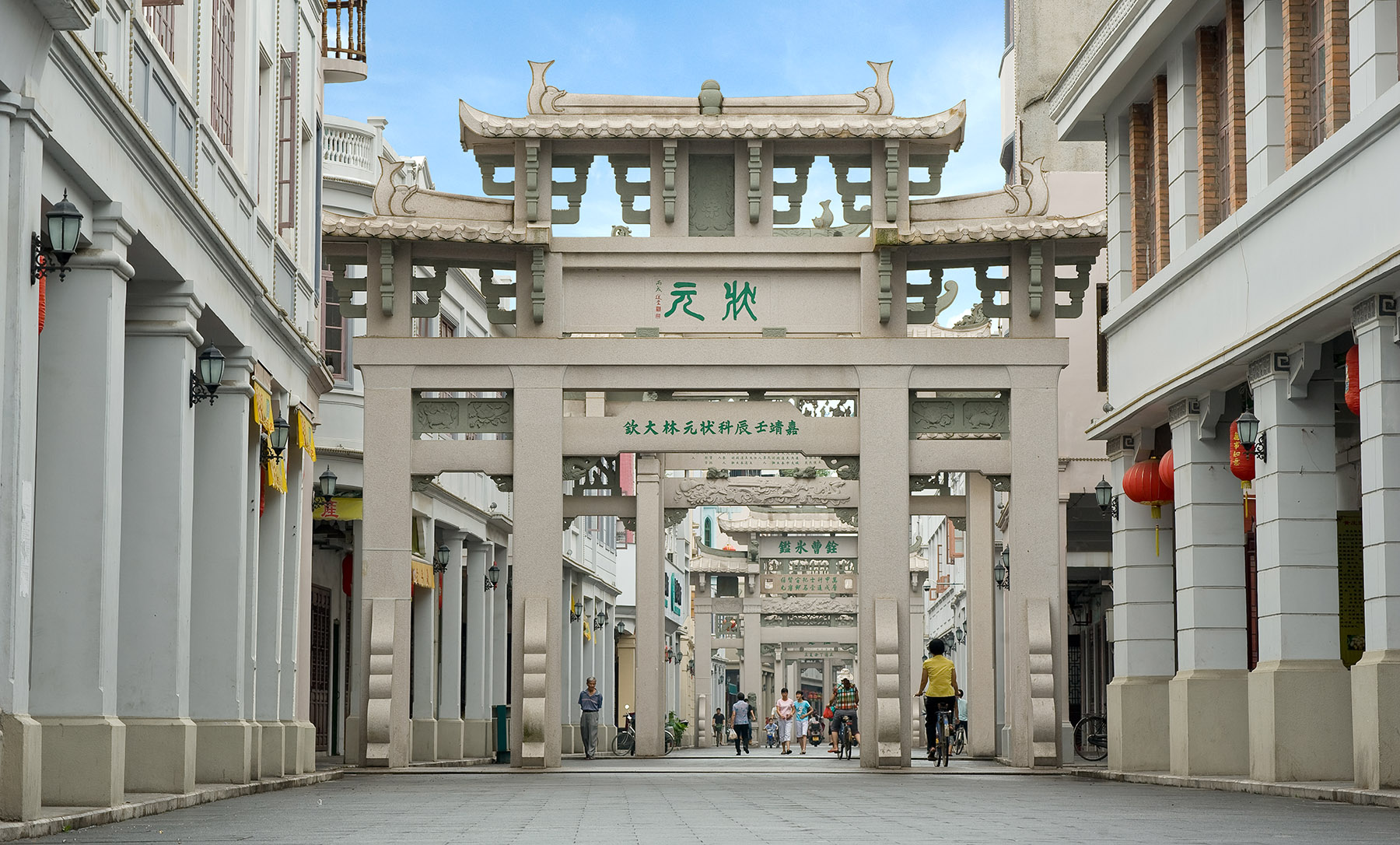
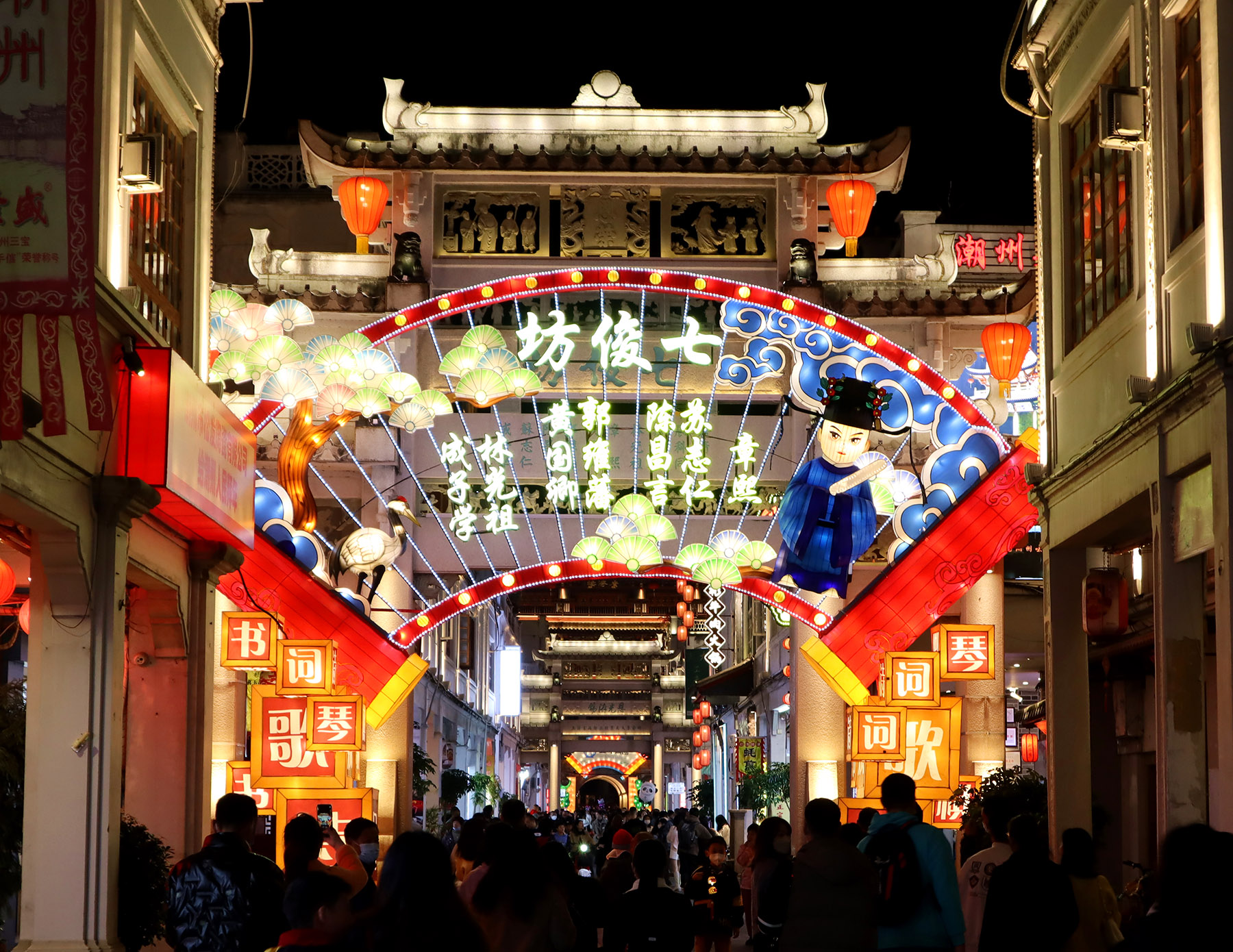
The street is lined with qilou (arcade buildings) dating back to the early 20th century, and 23 layered paifang. Although the existing paifang were restored between 2006 and 2009, they can still evoke memories of ancient Chaozhou glory in the keju, or imperial exams.
Chen Xianwu, a 53-year-old scholar of the city's history and culture, says the paifang were all built to commemorate successful candidates who got excellent results in the imperial exams in Chaozhou prefecture, which covered today's Chaoshan area during the Ming (1368-1644) and Qing (1644-1911) dynasties.
"Judging from historical literature, Chaozhou prefecture had 530 paifang. … The Taiping Road which extended 1.74 kilometers used to have 43, and people could see one every 40 meters," says Chen.
He says that the most symbolic among them is called Zhuangyuan Fang, and was erected in memory of Lin Daqin (1511-45), who achieved the highest scores in a final keju exam in the mid-Ming Dynasty period. Zhuangyuan was the name given to the top tier of imperial exam candidates, with the overall winner being called jinshi.
"Historical records show that Lin became the top candidate at just 22, a very young age. In comparison, another of the paifang on the street was put up to commemorate Qing Dynasty official Liu Qizhen (1648-1751), who became jinshi at the age of 87. This demonstrates Lin's ability," he says.
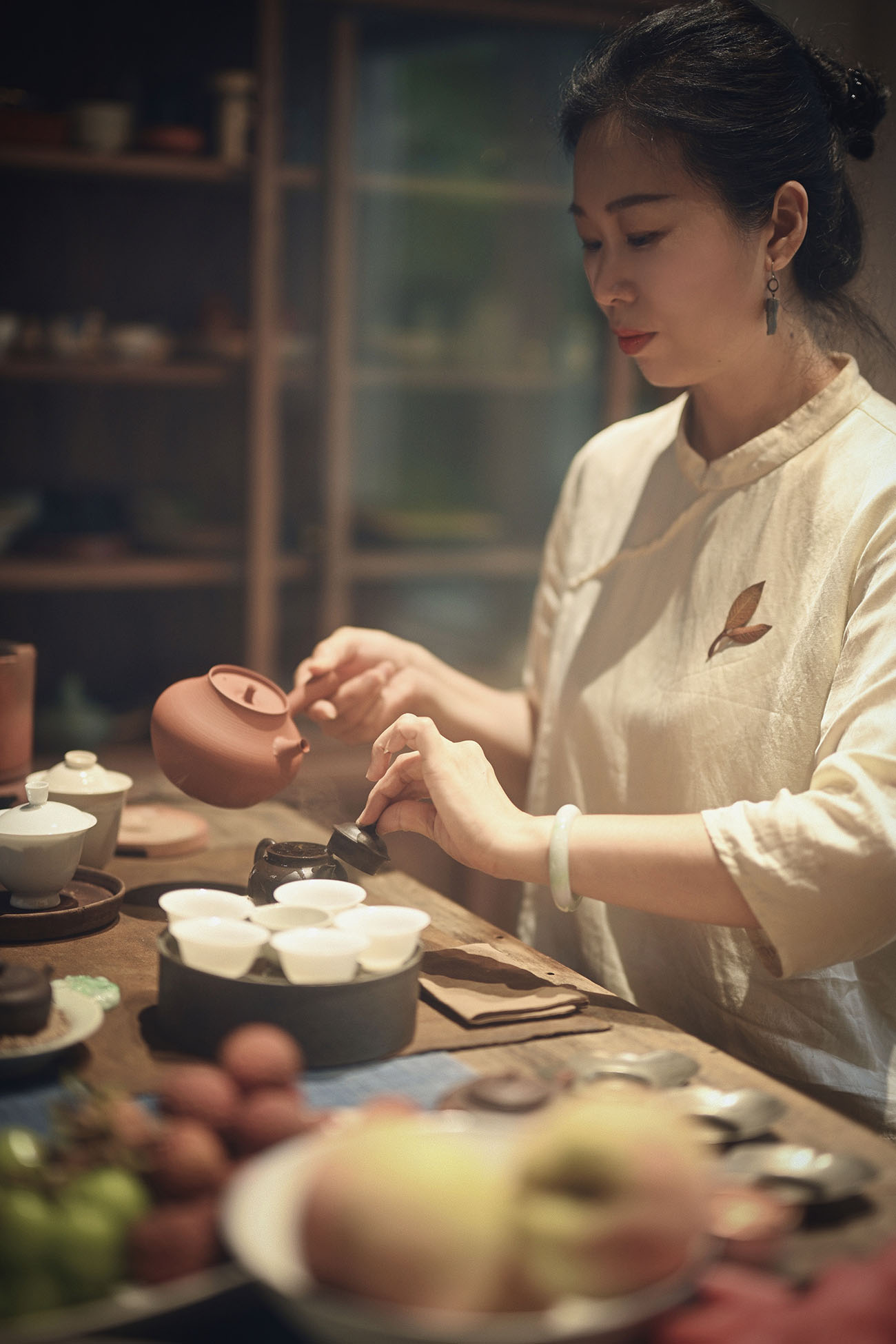
Chen says that Zhuangyuan Fang has a horizontal beam weighing 12 metric tons, which is placed on top of two pillars to symbolize that these people were vital to the country, and says the beam was lifted into place by a machine invented during the Ming period, which was similar to a crane.
As a result, the arches on the street symbolize good students, and have helped motivate people to study diligently since ancient times. "An elderly man once told me when he was young, his grandmother brought him to the street and told him to study hard so that one day he could have his own paifang here. With these role models, how could students not study hard?" says Chen.
"This story also reflects the significance of Paifang Street today — it's not just a tourist street, but serves as a bridge connecting our modern world with the traditional culture of the past," he adds.
The erecting of so many paifang indicates the local emphasis on education and culture, which is believed to have started with Han Yu, a Tang Dynasty (618-907) politician and man of letters who was banished from the court to Chaozhou, and greatly contributed to the area during his eight months of service.

One of Han's most significant contributions was to promote local education and reestablish a government-sponsored educational institution that had fallen into disuse. He also placed local people in charge of the institution, and donated his own savings to improve its facilities.
"'To the celestial court a proposal was made, and I am banished 8,000 miles away to Chaozhou'. This verse, written by Han, is meant to suggest the great distance, literal and metaphorical, between Chaozhou and the Central Plains, which was the cultural hub at the time. Consequently, it was difficult to bring Central Plains culture to Chaozhou. … But the arrival of Han, a representative of the culture of the Central Plains, and especially of orthodox Confucian culture, helped integrate Central Plains and Chaozhou culture. … Since then, Chaozhou has been influenced by Confucian culture as well," says Chen.
In October 2020, President Xi Jinping visited Chaozhou and learned about the restoration and protection of the city's historical areas as he walked along Paifang Street, urging greater effort to protect cultural heritage.
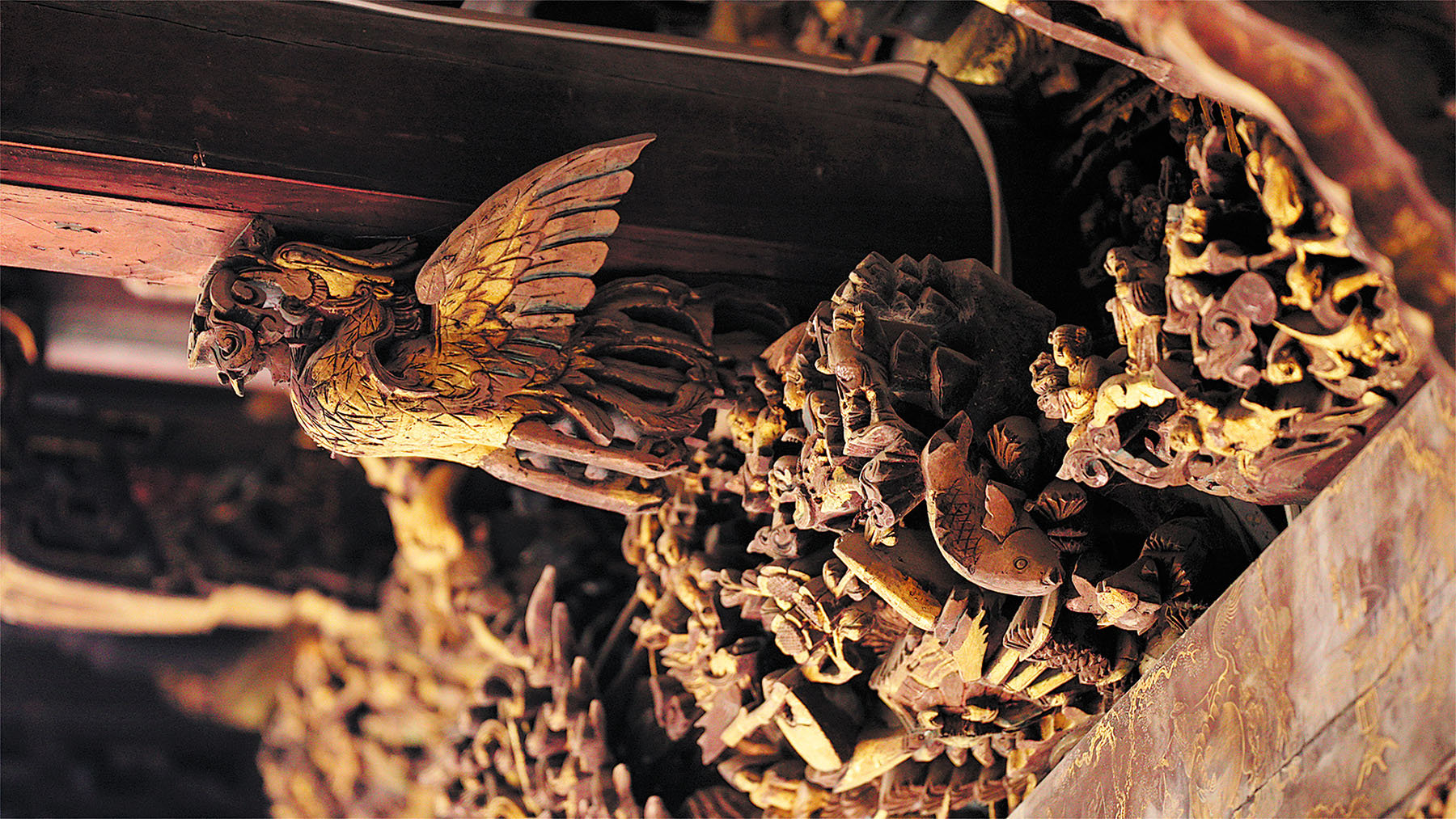
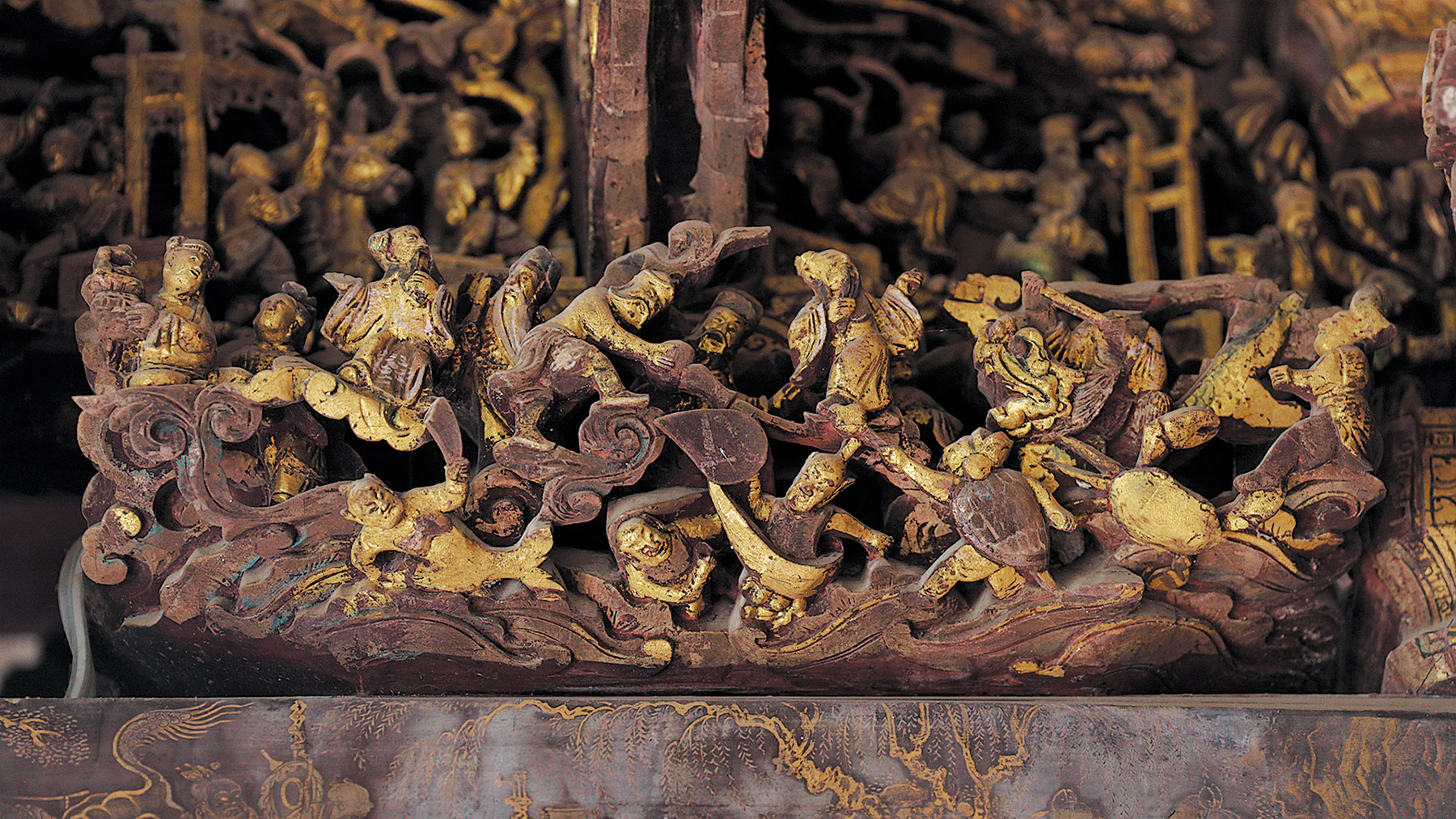
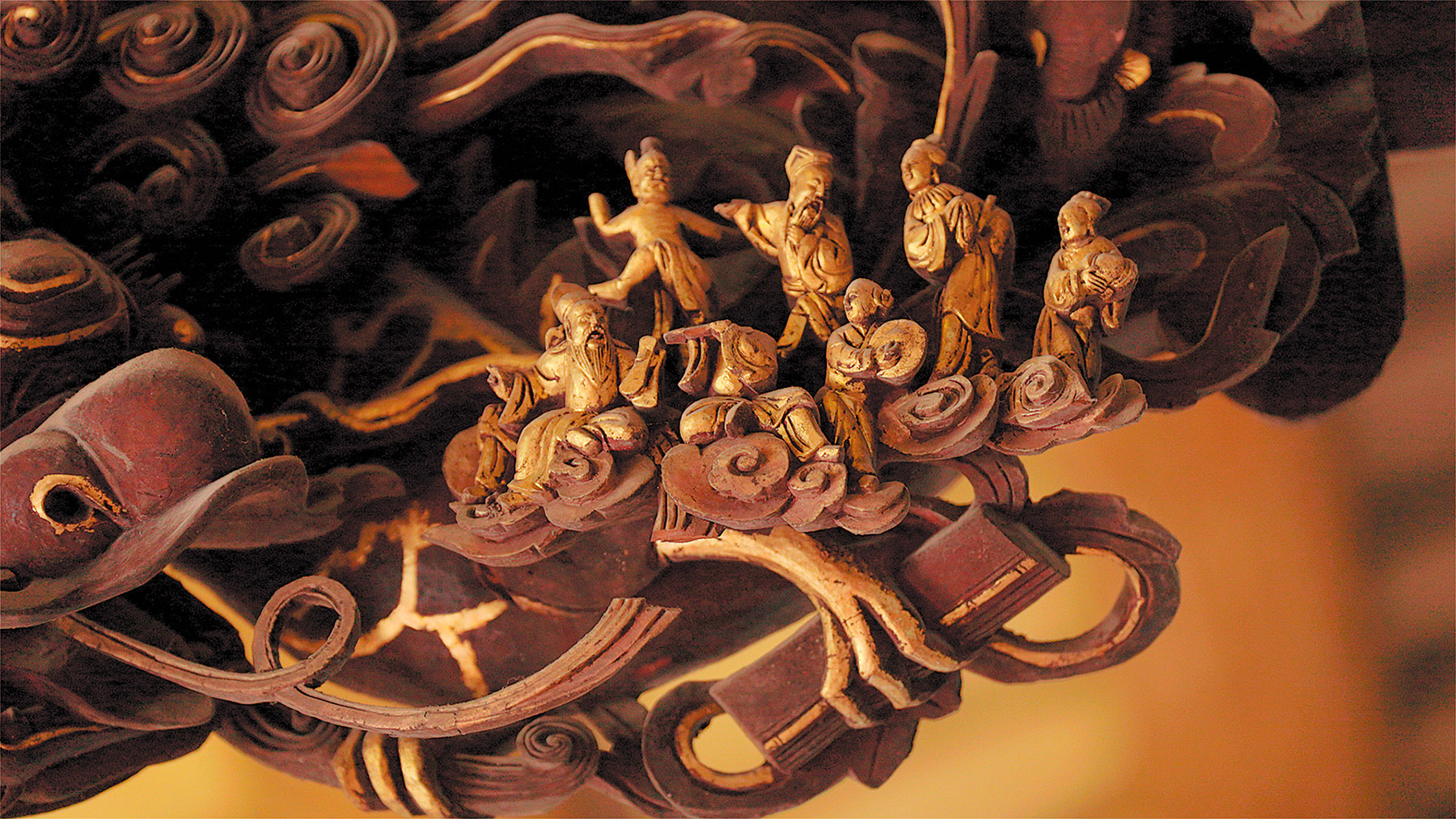
The many studios lining the street are a showcase of local crafts. Chen says that historically, due to the lack of farmland in the area, people turned to making handicrafts that could be sold to Southeast Asia to make a living.
To make their work competitive, they devoted great effort to perfecting their work.
One symbolic local craft is wood carving. Chen Jia, an inheritor of the craft, who has a studio on Paifang Street, says it used to decorate beams in traditional Chaozhou homes.
The Jilue Huanggong Ancestral Temple, a Qing Dynasty building in the ancient city, still contains outstanding examples of Chaozhou wood carvings, says Chen Xianwu.
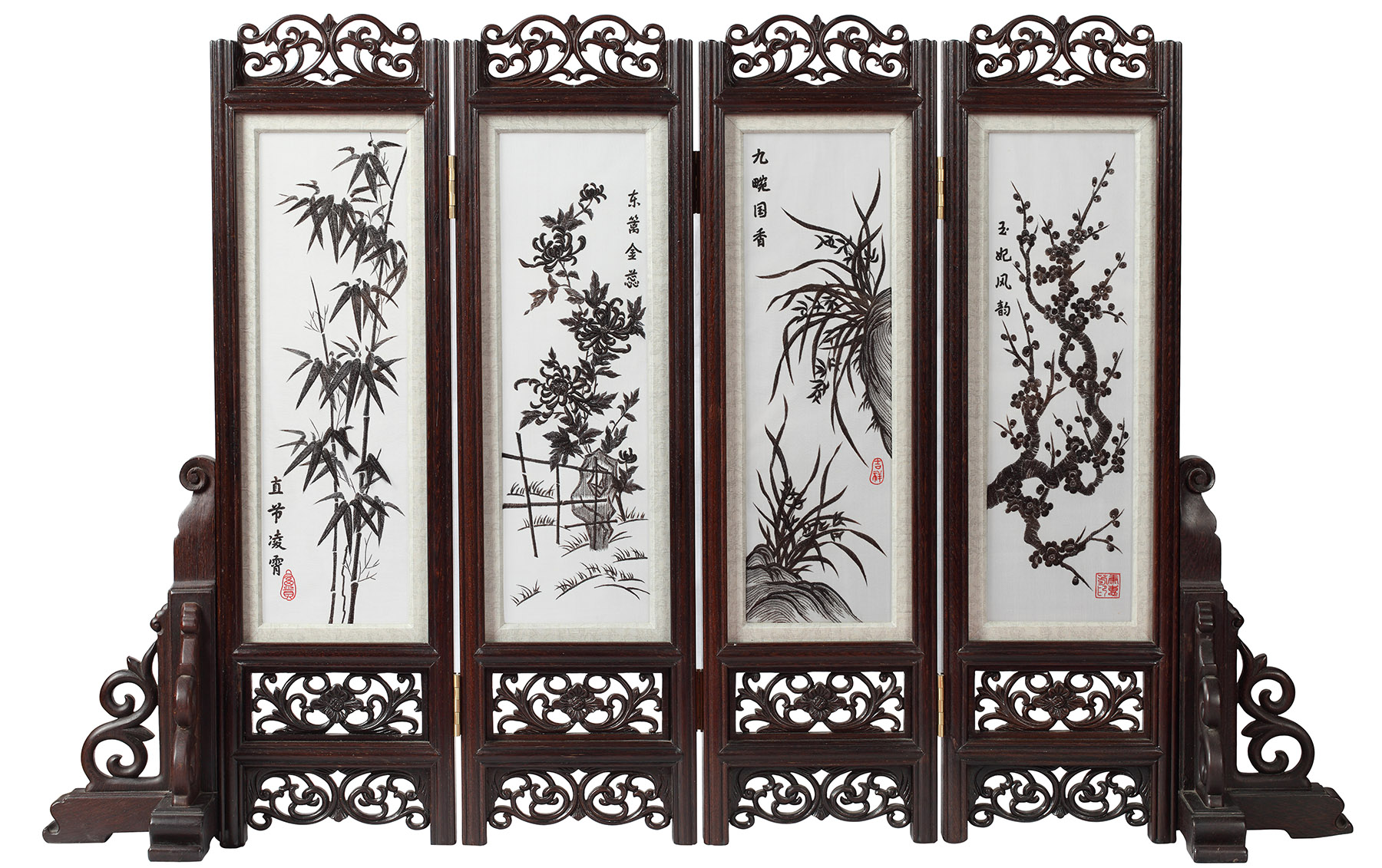
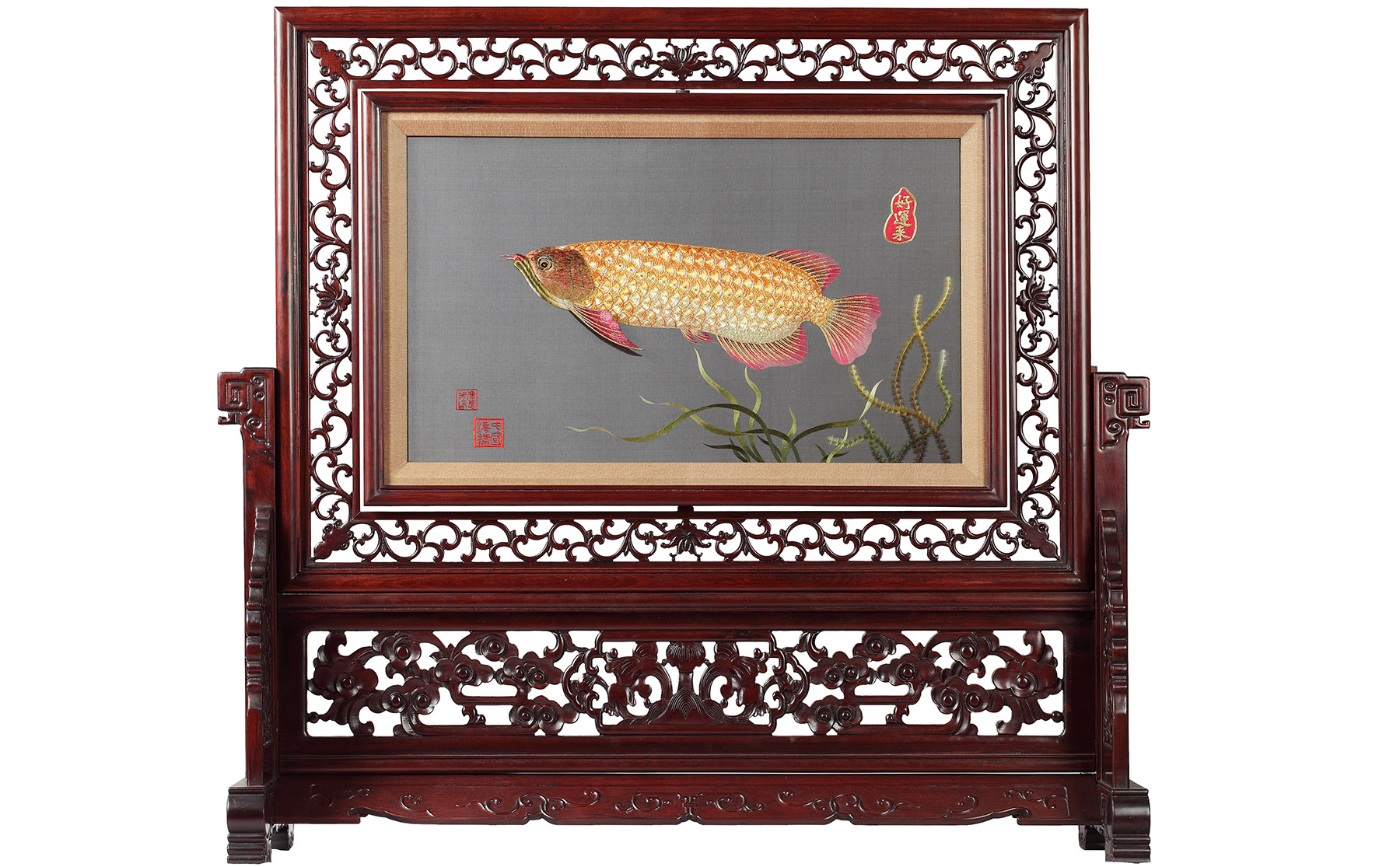
Chen Jia says the decorative baskets, which are carved out of a single block of wood, and traditionally covered in carvings of lobsters and crabs, are quite demanding to make, as the carver has to picture the finished piece before deciding where to start carving.
"As we carve the basket, we have to insert the knife into the spaces between the latticework to hollow out the inside of the basket and carve little crabs and lobsters inside. We often find it difficult to manipulate the blade, because the small size of the holes hinders us from freely using it," says Chen Jia.
"The finished item is visible in a series of clear layers that demonstrate the intricate craftsmanship involved in its creation," she adds.
A similar degree of meticulousness can also be seen in Chaozhou embroidery. When Kang Huifang, a national-level inheritor of the craft, made the Golden Arowana, she used silk threads in 18 colors to embroider the eye of the fish, so that it had a vivid expression just like a real fish.
Kang says she has had her studio on the street for 16 years because it has a long history and strong cultural associations. As a result, she believes more visitors are attracted to the street and to her studio, allowing her to better promote her craft.
Home to several ancient wells and modern teahouses, the street also demonstrates the local culture of drinking tea.
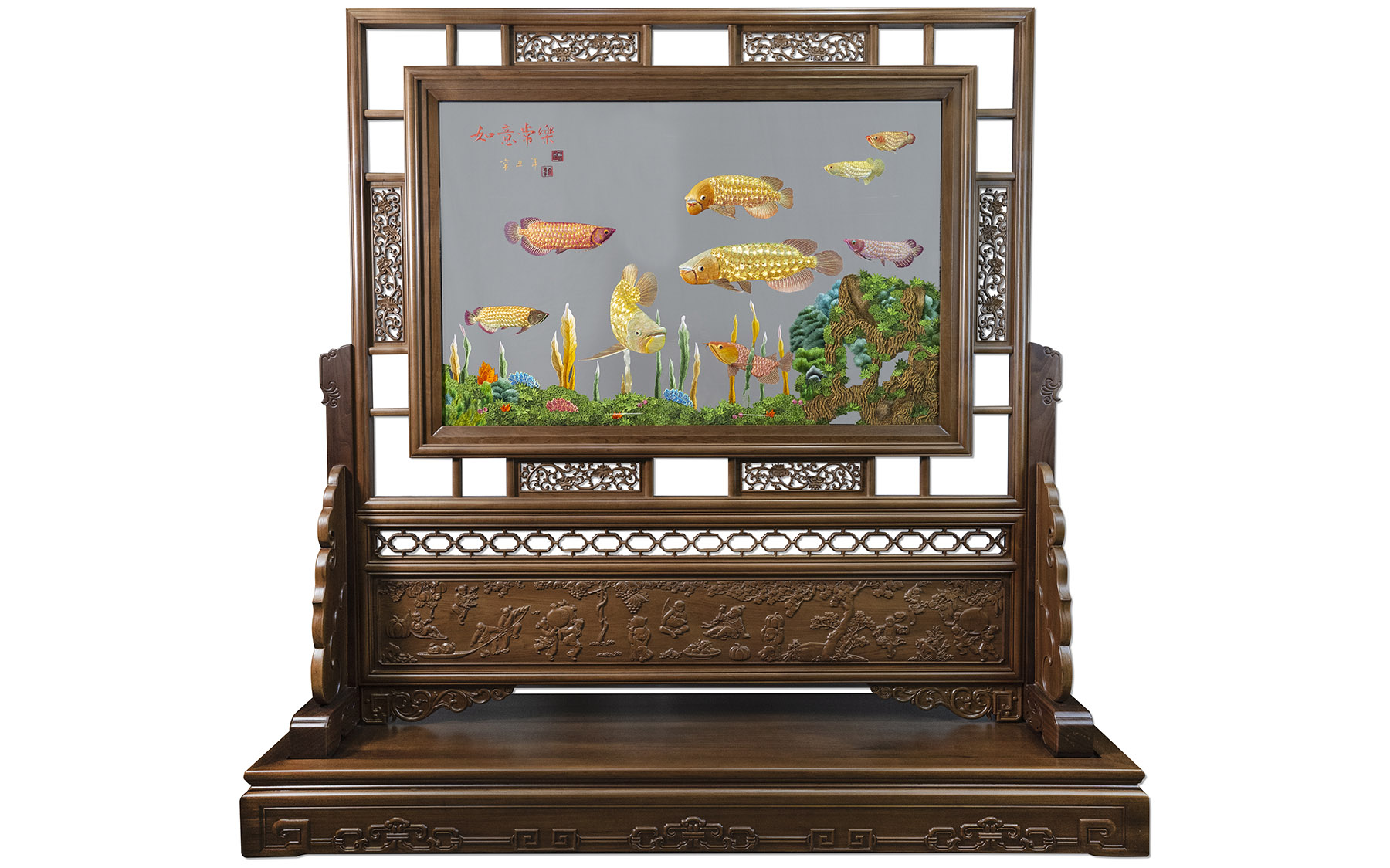
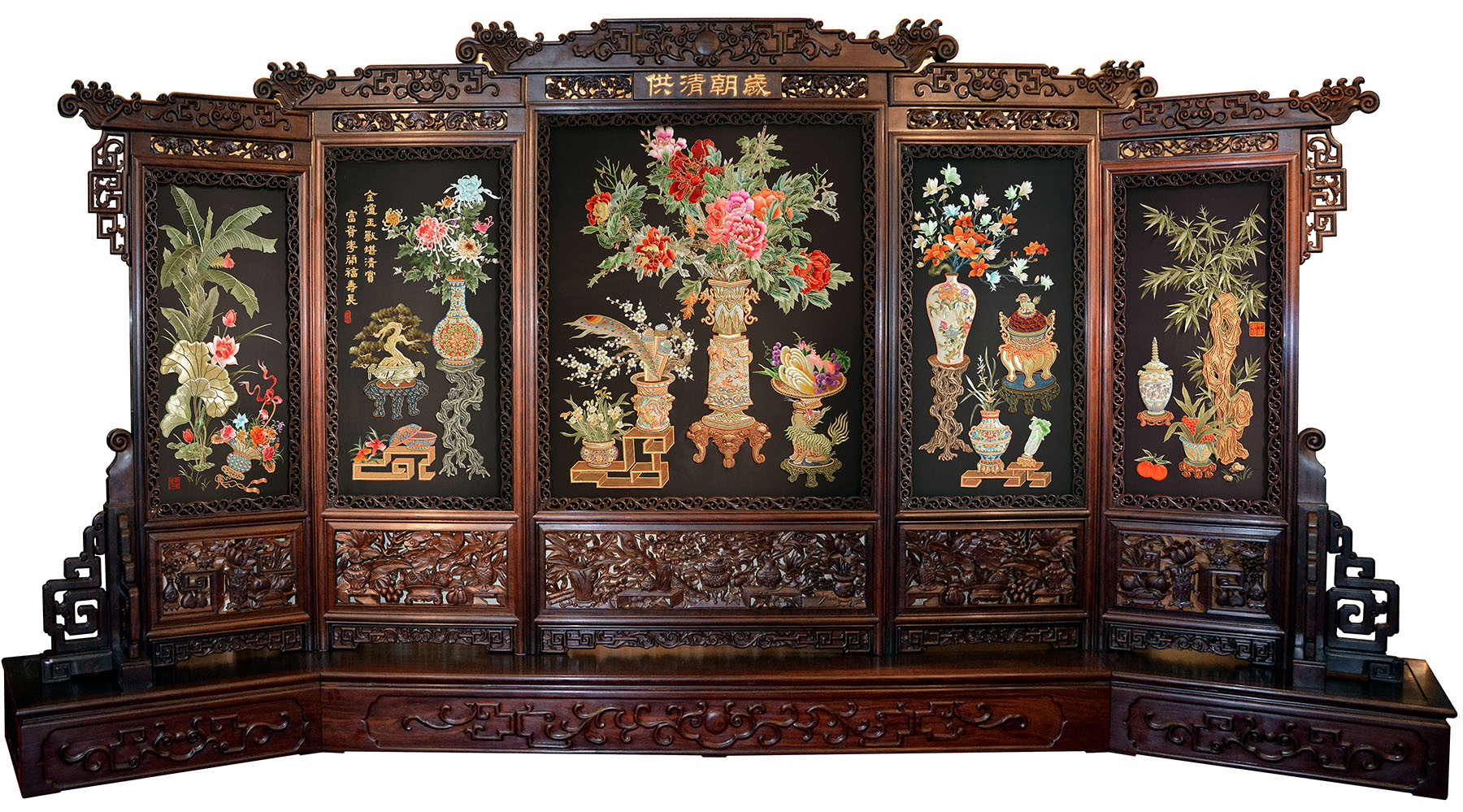
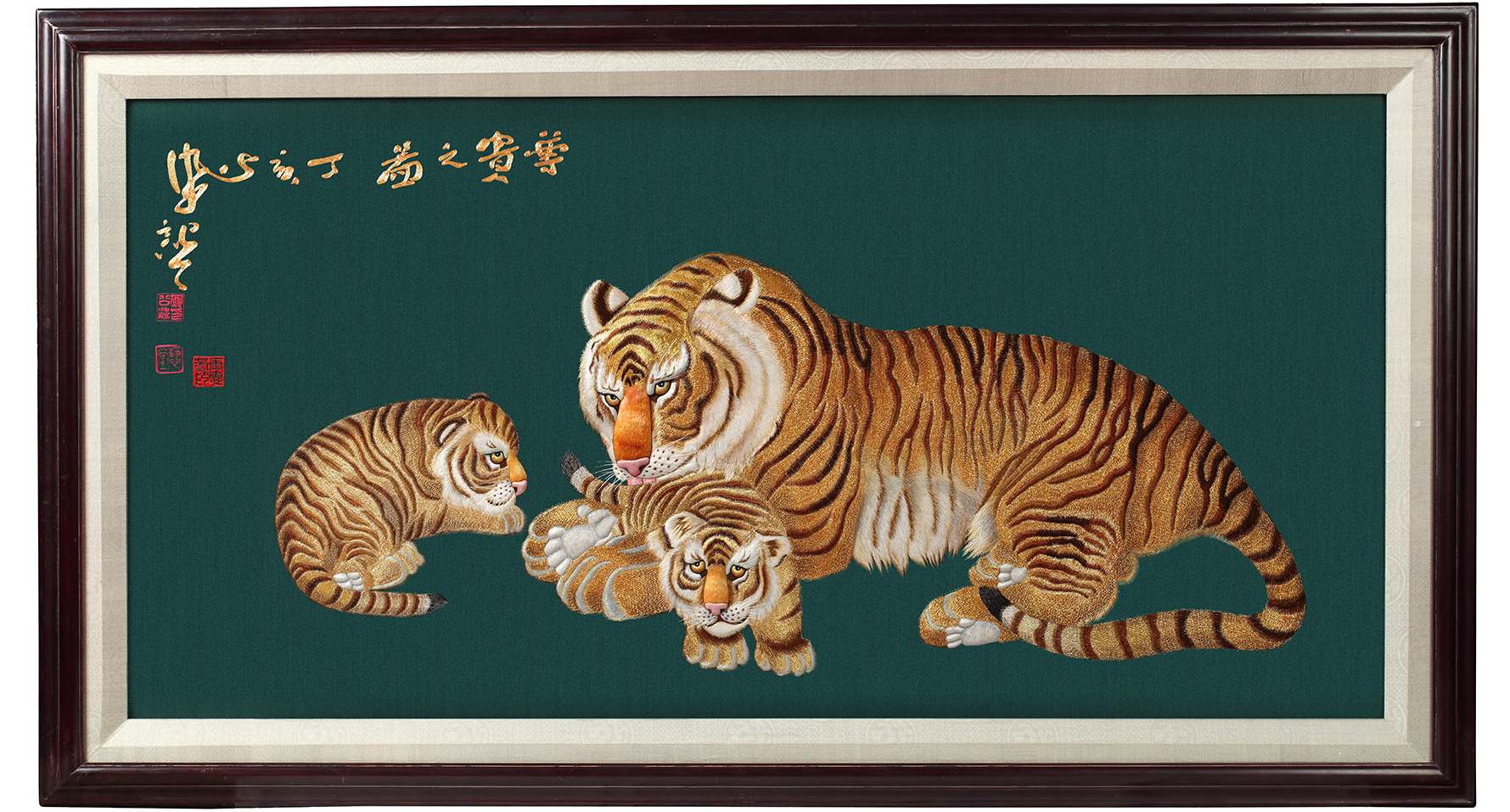
Long Sufang, who runs a teahouse on Paifang Street, is an inheritor of Chaozhou gongfu tea, a traditional ceremony that demonstrates gongfu, or skill, of Chaozhou people at making a good cup of tea.
The craft was inscribed on UNESCO's Representative List of the Intangible Cultural Heritage of Humanity in 2022.
"The ceremony has many detailed requirements for preparing, brewing and serving tea. The atmosphere, including the fragrance of the room and music, is also important. It is about Chaozhou aesthetics," says Long.
ALSO READ: Dance show's success in step with traditional Chinese legacy
Here, gongfu tea has become a way of social intercourse. "In Chaozhou, a special bond forms once people have enjoyed a cup of gongfu tea together. This helps enhance solidarity and has become an important part of Chaozhou culture," says Long.
Yang Lurong and Kong Wenzheng contributed to this story.
Contact the writers at wangru1@chinadaily.com.cn


